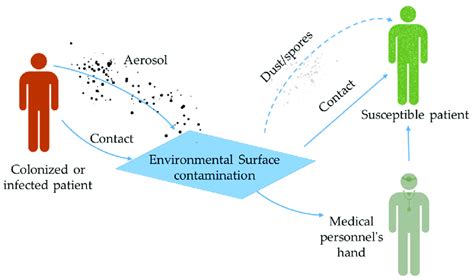“There’s a lot going on under the hood that we’re just not seeing.”
Have you ever wondered what really goes on behind the scenes in hospitals? Well, recent research has shed light on one of the most common hospital-associated infections, Clostridium difficile infection, also known as C. diff. This bacterium causes symptoms such as diarrhea, abdominal pain, and fever and can be fatal in about 6% of cases in the U.S.
In the past, it was believed that direct patient-to-patient transmission of C. diff was rare. However, a group of scientists decided to take a closer look by examining how this sneaky bacterium moves through hospital environments rather than just focusing on patients themselves.
Dr. Michael Rubin, an epidemiologist and infectious diseases specialist at the University of Utah who led the study, emphasized the importance of understanding these hidden dynamics: “If we ignore what’s happening behind the scenes, we could be unknowingly putting patients at risk.”
“We find about the same amount of patient-to-patient transmission as previous studies.”
To uncover the mysteries surrounding C. diff transmission within healthcare settings, researchers embarked on a comprehensive investigation that involved sampling nearly 200 ICU patients for C. diff. They didn’t stop there – they also collected thousands of samples from various surfaces in hospital rooms and even from healthcare providers’ hands.
Using cutting-edge whole genome DNA sequencing technology, scientists were able to track the movement of different strains of bacteria with precision. By comparing genetic differences between bacterial samples, they could trace how C. diff traveled between different areas within healthcare facilities.
Surprisingly, they discovered that C. diff was present in 10% of ICU patient stays either directly on patients or lurking around their room environment. What’s even more intriguing is that many times, genetically identical bacteria were found in both another patient and their surroundings.
“What I’m hoping we get from this paper is that health care providers put a greater emphasis on infection prevention measures.”
But here comes the plot twist – some potential transmissions occurred between patients who were never simultaneously present at the hospital! The hardy nature of C. diff allows it to survive outside its host for extended periods despite attempts to eradicate it with typical cleaning measures like alcohol-based sanitizers.
Not all forms of C. diff are harmful; however, these findings raise concerns about undetected spread involving disease-causing strains too. Researchers highlight the urgent need for stricter infection control practices within healthcare settings to prevent invisible transmissions.
Dr. Rubin stresses that using personal protective gear like gloves and gowns along with strict hand hygiene practices can play a critical role in breaking this chain of invisible transmission.
This eye-opening study was supported by grants from reputable institutions like NIH/NIAID and CDC aiming to enhance our understanding of infectious disease dynamics within hospitals.









Leave feedback about this